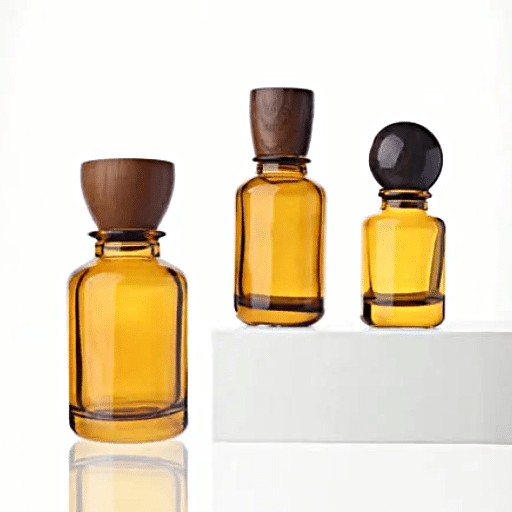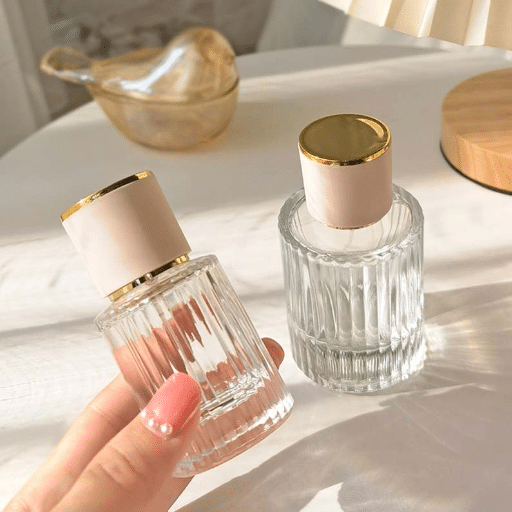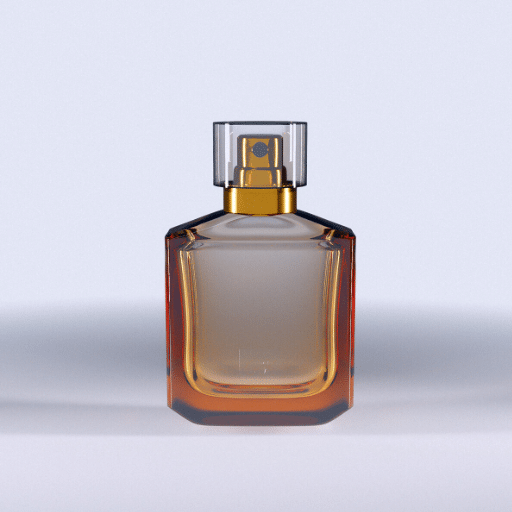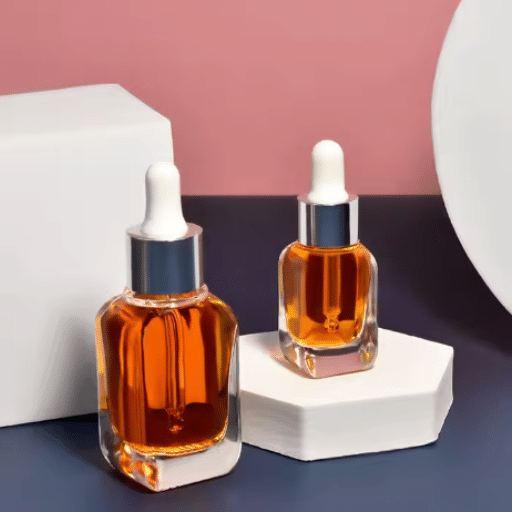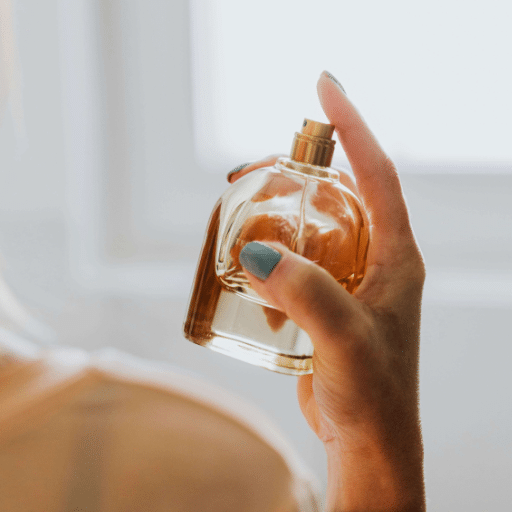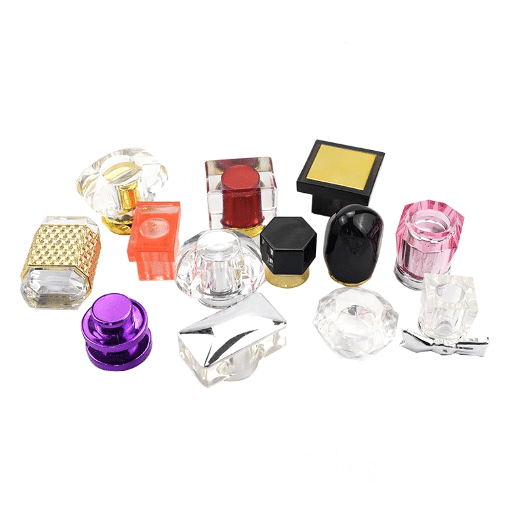When it comes to improving the user experience of perfumes, the nozzle plays a very crucial yet often underappreciated role. This little machine decides how finely or coarsely a fragrance can be dispensed and administers usability and endurance to it. From ensuring even dispersal to clog prevention, the perfume nozzle’s design and proper maintenance are utmostly critical to any fragrance product’s good performance. We shall look into various types of perfume nozzles, their functions, and maintenance considerations to maintain them in anti-adverse working order. If your interest lies in perfumes as a hobby or as an industry insider, then this guide will furnish you with many insights on how this small precise mechanism enhances the overall experience of applying your fragrances.
Types of Perfume Nozzles
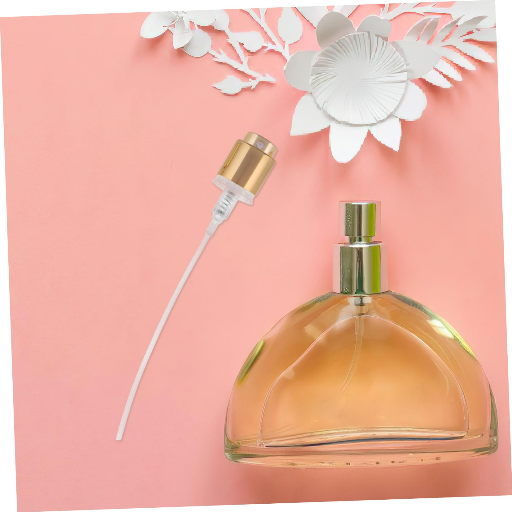
The primary types of perfume nozzles include classic spray nozzles, roll-on nozzles, pen-style nozzles, and aerosol nozzles.
|
Type |
Mechanism |
Use Case |
Control |
Portability |
|---|---|---|---|---|
|
Spray |
Pressurized |
Even misting |
Adjustable |
High |
|
Roll-on |
Roller ball |
Direct contact |
Fixed |
High |
|
Pen-style |
Twist/Squeeze |
Precise spots |
Fixed |
Very high |
|
Aerosol |
Gas-propelled |
Continuous mist |
Adjust/Fixed |
Moderate |
Spray Nozzle vs. Fine Mist Nozzle
Spray perfume nozzles and fine mist perfume nozzles differ in spray coverage, dispersion, droplet size, and user control, catering to varying application preferences.
|
Parameter |
Spray Nozzle |
Fine Mist Nozzle |
|---|---|---|
|
Coverage |
Wide |
Narrow |
|
Dispersion |
Uniform |
Concentrated |
|
Droplet Size |
Large |
Small |
|
Control |
Adjustable |
Fixed |
|
Application |
Broad |
Targeted |
|
Portability |
High |
High |
|
Usage |
Daily |
Precise |
Atomizer Nozzles: Benefits and Features
1.Higher Precision: Atomizer nozzles produce very fine droplets and maintain uniform application without waste.
2.Applications Versatility: Servicing four large fields, including medical, agriculture, and cosmetics.
3.Increased Efficiency Coverage: Distribute the liquid evenly over the surfaces of interest for uniform results.
4.Resource Conservation: Promote optimal usage of the liquid in question by avoiding over-application.
5.Customizable Options: May be customized in various ways to accommodate various operational conditions.
Dropper Nozzles: When to Use Them
Dropper nozzles must be used where careful precision and control of small liquid quantities are needed. When precision is needed, I use them to apply liquids such as essential oils, medicines, or chemical solutions. With their easy mechanism, I can guarantee just the right amount of dispensing without mess or wastage. Furthermore, dropper nozzles are particularly advantageous when it is important to maintain cleanliness or to minimize exposure to air or contaminants, such as with laboratory practices or skincare formulations.
Materials Used in Perfume Nozzles
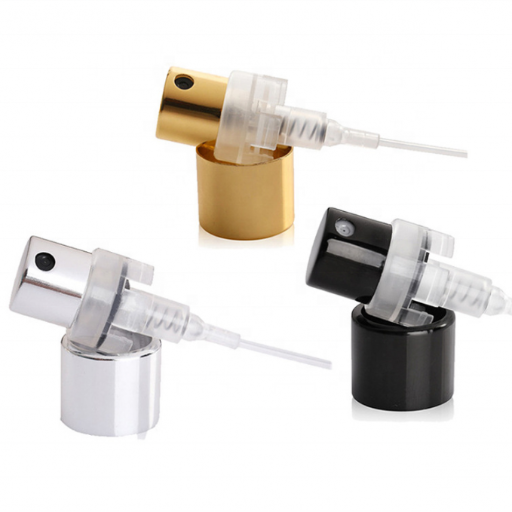
Usually perfume nozzles are built considering a combination of materials for the reasons of durability, functionality, and corrosion resistance. The materials most commonly selected include stainless steel as it offers the finest resistance against rust and chemical attack, and plastic parts, such as polypropylene, for low weight and cheap building. Some nozzles may also use silicone for sealing or added flexibility. These materials must keep away from interfering with the chemical component of perfumes and precisely dispensing perfumes while keeping the quality of the product over time.
Plastic vs. Metal: Pros and Cons
Plastic components are lightweight, cost-effective, and corrosion-resistant, while metal parts are durable, heat-resistant, and offer better structural integrity.
|
Parameter |
Plastic |
Metal |
|---|---|---|
|
Weight |
Lightweight |
Heavy |
|
Cost |
Low |
High |
|
Durability |
Moderate |
High |
|
Corrosion |
Resistant |
Can corrode |
|
Heat Resistance |
Low |
High |
|
Flexibility |
High |
Low |
|
Strength |
Moderate |
High |
|
Recyclability |
Limited |
High |
Glass Bottles and Their Nozzle Compatibility
Glass bottles for perfumes are commonly used in the fragrance industry, with an implication of elegance and durability while in addition to considering the preservation of the scent integrity. Still, nozzle compatibility becomes paramount as a parameter in selecting or manufacturing the bottles. The nozzle, in many cases called an atomizer, ought to fit firmly so that leakage does not occur and spray distribution can be even.
In the matter of nozzle compatibility, factors such as neck size-an important factor in bottle standardization and measured in millimeters like 15mm or 18mm-and threading type-that will decide on how the nozzle will be attached-come to play. Manufacturers usually follow standard sizes for their products; however, a bespoke design may require a little bit of an inventive solution. One other consideration to keep in mind is the chemical compatibility of the materials used in the nozzle construction. This means one should think about whether the plastics or metals used might react with the perfume or, in some cases, cause degradation. Another issue would be the use of sealing elements like gaskets or collars, which are crucial in guaranteeing airtightness, thus preventing evaporation or contamination.
The balance between these factors will allow for the least operational disruption, best user experience, and an increased lifetime of the contained fragrance itself.
Impact of Material on Fragrance Delivery
The material chosen for any part of the delivery mechanisms in fragrance products is a huge factor against their performance and durability. Glass, typically used for perfume bottles, has the property of being inert, and so it does not react with the fragrance and alter its integrity. Plastics may, on the other hand, keep things light and cheap, but they must be carefully chosen to ensure that there is no chemical leaching or absorption of the fragrance by them over time. Metals are commonly used for nozzles and must be resistant to corrosion considering the long exposure to fragrance compounds. The right materials are always those that will not only facilitate proper containment but also mean to precision of the spray mechanisms for consistent and controlled delivery in real-life application. Hence, material choice is a very important consideration concerning the stability and intended olfactory profile of perfumes.
Functions of Perfume Nozzles
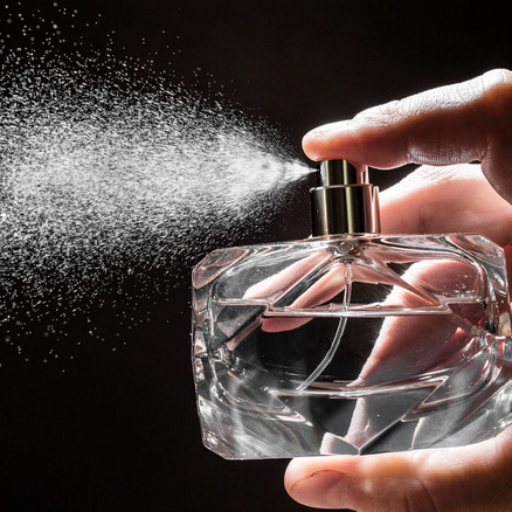
It may be said that one associates various functions with perfume nozzles. The very first is turning the liquid into a fine mist for even application on the skin or desired surface. By controlling flow rate and spray pattern, nozzles help minimize wastage of costly fragrance. Besides these, they also counteract contamination and evaporation of the perfume to preserve the integrity of the scent, its quality, and longevity.
How Nozzles Affect Fragrance Application
In application and experience, nozzles determine the fate of fragrance. The very design parameters of the nozzle govern spray pattern, droplet size, and coverage area, which constitute application variables for the even dispersion of fragrance onto either skin or a surface. A good nozzle ensures a very fine mist uniformly sprayed onto the skin, thus ensuring precision in application and enhancing its sensory experience. A good nozzle design helps to curtail the emission rate to ensure maximum usage of the product. Also, reduced wastage from sluggish leakage coupled with minimal exposure to air stops the fragrance from contamination and evaporation, thus forming the character of the fragrance and extending its living period. All these ensure that the fragrance gets applied properly and retains its defined form of presence after a while.
The Role of Nozzles in Perfume Packaging
Nozzles have one of the determining functions in the efficiency and user experience of perfume packaging. The primary function is to provide a defined spray of fragrance such that even coverage is made, and wastage of product is reduced. Since they atomize the liquid, the nozzles convert the perfume into fine droplets that will enhance projection and longevity of the scent. According to advanced settings, the nozzle will thus also prevent leakage and reduce exposure to air, ultimately giving its quality and shelf life more time; when ergonomically designed, the nozzle mechanism will make using the perfume a pleasant and seamless experience. These observations insinuate how important nozzles really are for maintaining the molecule integrity and usability of the modern perfume product.
Understanding Spray Patterns and Coverage
In my opinion, spray patterns refer to the specific dispersion of liquid in the jet air from a nozzle, a very important factor in scent distribution and coverage area of a perfume. Ideally, a spray pattern should consist of an even mist dispersing fragrance over the maximum possible reach while avoiding wastage. Characteristics such as nozzle diameter, spray angle, and atomization rate enter greatly into the attainment of desired spray characteristics. Coverage, on the contrary, depends on the means of application by the perfume user and on the design of the nozzle. A really well-designed nozzle allows for all droplets to be equal in terms of dispersion, with which they remain in the air or on the target for optimum affectance strength and time.
Maintenance Tips for Perfume Nozzles
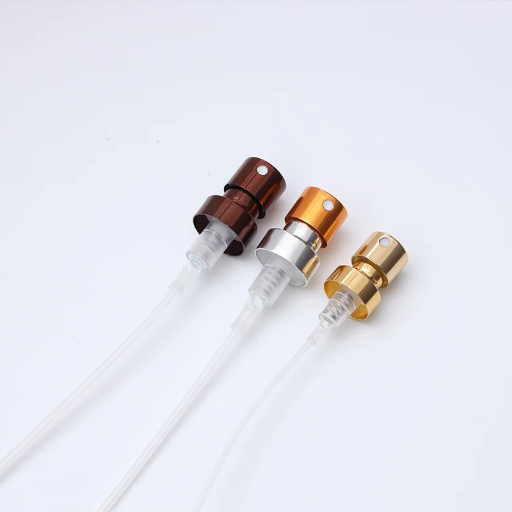
Perfume nozzles require regular maintenance to stay in the best condition and to ensure maximum product dispensing. Ensure cleaning of the nozzle every now and then to avoid clogging because of accumulation of residues in the nozzle. Wipe the nozzle using a cloth soaked in clean water or alcohol, or a cotton swab might also do. Avoid pressing with all force: it could harm the inside mechanism. Sometimes spray patterns become diffracted: look for obstructions inside and, if any are found, clear them carefully using a pin or a needle. Perfume bottles should always be stored upright and never subjected to conditions of high temperature or humidity, as this would affect the functionality of the nozzle. Proper care would enhance the functioning of the nozzle and provide for an even application of fragrance.
Cleaning Techniques for Optimal Performance
1.Rinse with Warm Water: If possible, take the nozzle apart and rinse it thoroughly under warm water to ensure that residue and clogs are removed without causing harm to the parts.
2.Use Isopropyl Alcohol: Soak the nozzle in a little isopropyl alcohol for a few minutes if the residue is tougher, because that will help dissolve buildup more effectively; rinse then with warm water and dry before putting it back together.
3.Clean with a Soft Brush: If any residue stubbornly stays on, gently brush the nozzle using a brush with soft bristles, such as a toothbrush, so it cleans the inside surfaces without causing scratches.
4.Inspect for Debris Regularly: Check the nozzle regularly for visible particles or dirt and clear them off with a fine needle or toothpick to avoid clogging and ensure a steady flow.
5.Do a Monthly Maintenance Routine: Make monthly cleaning a part of your routine, especially for nozzles you use frequently, so that they consistently stay clear of blockages and operate at peak efficiency over time.
When to Replace Your Perfume Nozzle
If a nozzle has stubborn issues that cannot be fixed with cleaning or generic maintenance, it is advisable to replace it. This means that if the nozzle is fully blocked or damaged, or its spray pattern alters considerably despite regular maintenance, then it is best to replace it so that it functions well. An impaired nozzle damps the best atmosphere because the fragrance dispersion may be affected; something gets wasted during application, and the entire effect is affected.
Storage Tips for Longevity
1.Perfumes should always be stored in a cool, dry place away from direct sunlight or sources of heat, since prolonged heat exposure can alter the chemical composition and eventually degrade the fragrance.
2.Keep the bottle tightly sealed when not applying fragrances to prevent evaporation and contamination, which spoil the scent and longevity.
3.Never store perfumes in spaces that retain moisture, such as a bathroom, since humidity will eventually deteriorate the fragrance.
4.Storing a bottle on its side may weaken it and loosen the grip of the cap and nozzle; be safe and store it standing upright.
5.Use the original packaging or a sturdy case to protect the bottle from light exposure and possible physical damage.
Customizing Your Perfume Experience
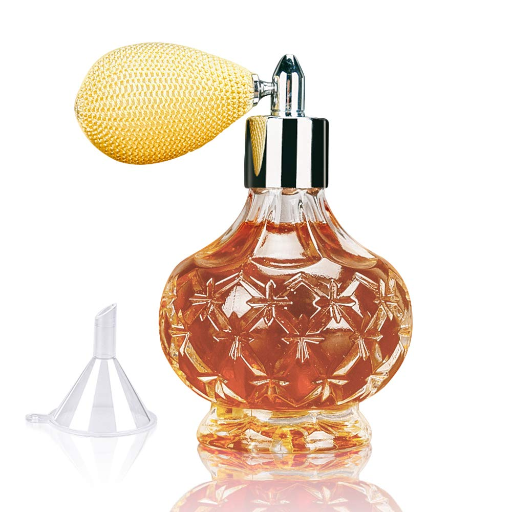
Customizing your perfume experience begins with researching your likes and the occasion it would be required for. Choose a scent profile—to name a few: flowers, woods, and spices—that matches with his or her personality or mood. Importantly, a real signature scent can be developed by layering perfumes by using complementary scents that mix well together. Changing intensity can also be done through variation of application; for example, light spraying on garments or heavy application on pulse points will dramatically change projection and longevity. This customized method will allow the perfume to fit the individual’s style and needs perfectly.
Refillable Perfume Bottles and Nozzles
Refillable perfume bottles and nozzles are an eco-friendly and cost-reducing option for all fragrance lovers. Their design allows for use over multiple occasions so one only has to refill the lotion without needing to go through the trouble of obtaining fresh packaging all together. Most of the refillable bottles are usually made from sturdy materials such as glass or durable plastics; hence their extended lifespan is also one of the factors that make them environmentally friendly because less waste is generated from the bottle itself. The nozzle is generally designed to fit perfectly so as not to leak fragrance from the time of refilling to using it, giving the fragrance an even application. Nowadays, many brands have started offering refill stations or fragrance cartridges for refillable bottles, adding to the convenience and eco-friendly ambiance. This goes beyond packaging waste and supports customization since the users have the option to bring along multiple fragrances in containers designed for travel.
Choosing the Right Nozzle for Your Scent
Choosing the right nozzle is a must to be sure that the fragrance application is smooth, going hand-in-hand with the perfect delivery of the scent. Multiple types of nozzles are at one’s disposal, each tailored for a particular product. For applications needing really fine mist, atomizer nozzles are perfect because they disperse the scent very evenly, efficiently, and in a way that prevents overuse of fragrance. Spray nozzles, on the other hand, can be applied in the targeted way and thereby are ideal for perfumes that need to be applied in precise areas. It is equally important to consider viscosity among the essential factors-thicker agents might need specialized nozzles able to keep the flow unvarying without blockage. Also, the incompatibility of the bottle threading and size affects its use greatly. It hence does not hurt to check out user reviews and talk to manufacturer specifications, all of which may help single out nozzles at the interface of best functionality, durability, and aesthetic appeal.
Reference Sources
-
Exploring Different Types of Perfume Sprayers and Their Applications – A detailed overview of various perfume sprayers and their uses.
-
Exploring the Parts of a Perfume Bottle: A Detailed Guide – Discusses different types of atomizers and their purposes.
-
Types of Perfume Bottle Nozzles: Which One is Best for Your Fragrance – A guide to various nozzle types and their unique features.
-
How Perfume Nozzles Impact the Diffusion and Longevity of Fragrance – Explains how nozzle designs affect fragrance application and longevity.
-
What is a Perfume Atomiser? – Provides insights into the structure and function of perfume atomizers.
Frequently Asked Questions (FAQ)
Q:What is a perfume spray nozzle and how does it work?
A:A perfume spray nozzle is a device attached to a perfume bottle that allows users to dispense a fine mist of fragrance. It works by creating pressure inside the bottle, which forces the liquid through a small opening, resulting in an even spray that distributes the scent effectively. This is essential for an enjoyable application experience without wastage.
Q:How can I replace a broken perfume nozzle?
A:If your perfume nozzle is broken, you can replace it by purchasing a compatible spray nozzle or atomizer. First, carefully remove the existing nozzle from the perfume bottle. Then, attach the new nozzle, ensuring it fits snugly to prevent leaks. This will allow you to continue using your favorite fragrance without having to buy a new bottle.
Q:Are there refillable perfume spray bottles available?
A:Yes, there are many refillable perfume spray bottles available on the market. These bottles are designed for convenience, allowing you to refill them with your favorite fragrance or essential oils. They are eco-friendly options that help reduce waste associated with disposable packaging.
Q:What are the benefits of using a glass perfume bottle?
A:Glass perfume bottles offer several benefits, including preserving the quality of the fragrance and preventing chemical reactions that can occur with plastic packaging. Glass bottles also provide an elegant aesthetic and are often recyclable, making them a popular choice for both consumers and brands focused on sustainability.
Q:How do I properly clean a perfume spray bottle?
A:To clean a perfume spray bottle, first, empty any remaining fragrance. Rinse the bottle with warm water and use a mild soap to clean the interior. You can also use a small brush to reach difficult areas. After cleaning, rinse thoroughly to remove any soap residue and let it dry completely before refilling with a new scent.
Q:What should I do if my perfume sprayer is leaking?
A:If your perfume sprayer is leaking, first check the nozzle and ensure it is tightly secured. Sometimes, the issue can be a damaged collar or bottle cap. If the problem persists, consider replacing the nozzle or using a different perfume bottle that provides a better seal to prevent spills.
Q:Can I use essential oils in a perfume spray bottle?
A:Yes, you can use essential oils in a perfume spray bottle. However, it’s important to dilute the essential oils with a suitable carrier oil or alcohol to ensure a safe and effective application. This will also help prevent clogging of the nozzle and allow for a fine mist when sprayed.
Q:What types of cosmetics packaging are available for perfumes?
A:Cosmetics packaging for perfumes includes various options such as glass bottles, plastic containers, and custom cosmetic packaging. Each type serves different purposes, from aesthetics to functionality. Brands often choose packaging that enhances the fragrance experience while ensuring product safety and longevity.
Q:How can I create a unique bottle for my custom fragrance?
A:To create a unique bottle for your custom fragrance, consider collaborating with a packaging designer. You can choose specific materials, shapes, and colors that reflect your brand identity. Incorporating features like a distinctive spray top or decorative bottle cap can also enhance the overall appeal of your perfume packaging.

